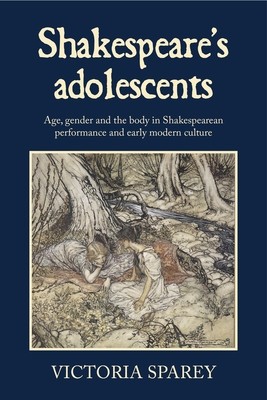
- We will send in 10–14 business days.
- Author: Victoria Sparey
- Publisher: Manchester University Press
- ISBN-10: 1526168197
- ISBN-13: 9781526168191
- Format: 15.6 x 23.4 x 1.4 cm, kieti viršeliai
- Language: English
- SAVE -10% with code: EXTRA
Reviews
Description
Shakespeare's adolescents examines the varied representation of adolescent characters in Shakespeare's plays. Using early modern medical knowledge and an understanding of contemporary theatrical practices, the book unpacks complexities that surrounded the cultural and theatrical representations of 'signs' associated with an individual's physical maturation. Each chapter explores the implications of different 'signs' of puberty, in verbal cues, facial adornments, vocal traits and body sizes, to illuminate how Shakespeare presents vibrant adolescent selves and stories.
By analysing female and male puberty together in its discussion of adolescence, Shakespeare's adolescents provides fresh insight into the age-based symmetry of early modern adolescent identities. The book uses the adolescent's state of transformation to illuminate how the unfixed nature of adolescence was valued in early modern culture and through Shakespeare's celebrated characters and actors.
EXTRA 10 % discount with code: EXTRA
The promotion ends in 23d.15:43:05
The discount code is valid when purchasing from 10 €. Discounts do not stack.
- Author: Victoria Sparey
- Publisher: Manchester University Press
- ISBN-10: 1526168197
- ISBN-13: 9781526168191
- Format: 15.6 x 23.4 x 1.4 cm, kieti viršeliai
- Language: English English
Shakespeare's adolescents examines the varied representation of adolescent characters in Shakespeare's plays. Using early modern medical knowledge and an understanding of contemporary theatrical practices, the book unpacks complexities that surrounded the cultural and theatrical representations of 'signs' associated with an individual's physical maturation. Each chapter explores the implications of different 'signs' of puberty, in verbal cues, facial adornments, vocal traits and body sizes, to illuminate how Shakespeare presents vibrant adolescent selves and stories.
By analysing female and male puberty together in its discussion of adolescence, Shakespeare's adolescents provides fresh insight into the age-based symmetry of early modern adolescent identities. The book uses the adolescent's state of transformation to illuminate how the unfixed nature of adolescence was valued in early modern culture and through Shakespeare's celebrated characters and actors.


Reviews